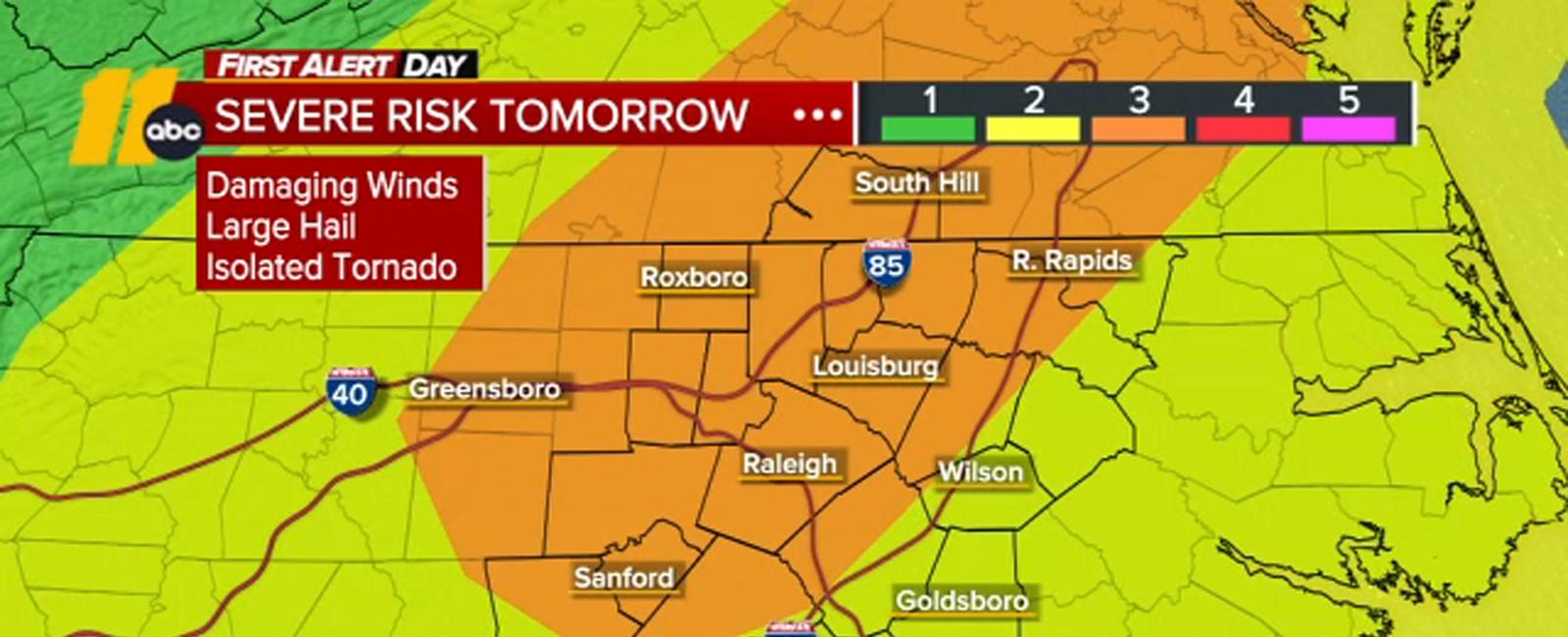NC weather: Level 3 risk of severe storms Monday -- strong wind, damaging hail most likely threats; flooding, tornados less likely

Possible news article summary:
Batten down the hatches, North Carolinians! The National Weather Service has issued a Level 3 risk of severe thunderstorms for Monday, April 12, which means that scattered to widespread severe weather is possible, even though not guaranteed, within the region. However, the most likely hazards are strong wind gusts of up to 70 mph and large hail of up to 2 inches in diameter, both of which can damage buildings, cars, and trees. Other possible but less probable risks include flash flooding, as some areas could receive up to 2 inches of rain per hour, and isolated tornadoes, which could spin up in the storms’ leading edges or in any rotating updrafts.
The article conveys the urgency, uncertainty, and complexity of predicting and preparing for severe weather, while also providing some specific details about the expected impacts and locations. For instance, the weather models suggest that the storms could start developing in the afternoon and last until late at night, affecting mainly the western half of the state and possibly spreading to nearby regions like Virginia or South Carolina. However, the timing, intensity, and tracks of individual storms can vary widely, making it hard to pinpoint which areas will see the worst conditions. Therefore, the article advises readers to stay informed of the latest updates from the weather service, to secure loose objects outdoors, to charge electronic devices and backup batteries, to avoid driving through flooded areas, and to seek shelter in sturdy structures if thunder roars or lightning strikes nearby.
As a language model, I cannot experience the weather or the impact it has on people’s lives directly, but I can recognize how crucial it is to stay aware of potential dangers and to take precautions when necessary. Severe weather events can cause injuries, deaths, property damage, and disruptions to transportation, power, and water supply. They can also affect agriculture, tourism, and other economic sectors that rely on seasonal patterns and weather-sensitive activities. Moreover, climate change is likely to enhance the frequency and intensity of some extreme weather events, such as high heat, heavy precipitation, and coastal flooding. Therefore, reporting on weather risks and resilience strategies is an ongoing responsibility for news sites and journalists who aim to serve their communities and facilitate public understanding and action.
Quick Links

